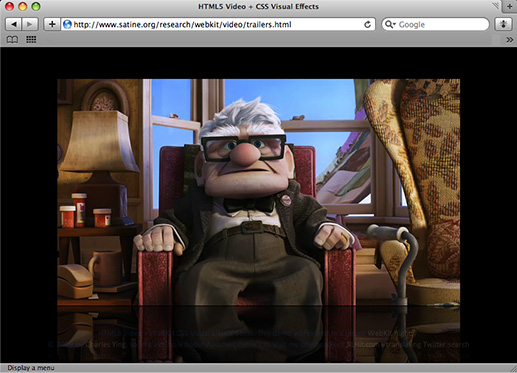A Kick Ass Browser Renaissance
Sunday, July 5th, 2009Why are building browsers in vogue again?
Quite simply, a browser renaissance, started with WebKit, a small and flexible open source code base that used less memory and power, and kicked ass at rendering the Web.
WebKit is really helping folks easily create and extend browsers with its very flexible and understandable code base. It’s truly the Linux renaissance again, driving innovation, and place browsers where they were difficult or impossible to put before. And WebKit’s rivals didn’t sit still, they’re also kicking ass at an insane clip, and we, the users and developers, benefit.
Great hardware needs great software.
The browser is really your OS now – your apps live and run there, and you want them to run well. The browser experience matters again. That’s why Apple is here, making a great browser to sell with their hardware. Google, Nokia, HTC, Palm and many others are here for the same reason.
Closely related to this activity are pure browser vendors like Opera, selling a quality mobile web browser to hardware OEMs that don’t have the time to make their own. This is also Mozilla’s goal with Fennec.
A flashier World Wide Web.
- Flash: Adobe needs to protect its dominance on the desktop Web interactive media experience. Adobe also wants to duplicate Flash’s success in mobile.
- CSS Visual Effects: Apple is tired of Flash’s slow pace of innovation, performance and constant crashing on Mac OS X. Steve and Bertrand’s insurance policy. And why the hell not when you make stuff like Quartz, Core Animation, QuickTime X, and iPhones.
- Silverlight: Microsoft builds their own browser, why not their own Flash?
- HTML5 Video: Everyone doesn’t want all video to go through a Flash plugin. Plus, cool video reflections!
What your high tech company should think about.
If you make consumer hardware products, having a great browser will be a key strategic factor to having great applications, user experience, and long-term extensibility.
If you make consumer facing applications, browsers now offer the best user interface framework “toolkit”. There are only very few reasons to use or build a custom UI framework today, primarily availability and performance.
If you make pure web applications already, targeting these modern browsers now makes sense, the most desirable consumers now have these types of browsers, and the market share continues to climb.
If you make or use software frameworks, innovations in the browser wars have yielded some amazing technology that you should be taking advantage of. The 3 JavaScript engines, WebKit Nitro, V8, and Mozilla TraceMonkey now are starting to surpass other dynamic languages in performance and other languages are starting to play catch up.
If you are Google, I’d do this.
While we’re talking about JavaScript …
Distributing computation work to browsers is a new frontier. Imagine offloading your search indexing or database indexing to visiting users. Having compute clusters will lower the cost of building large scale distributed services in the near future. Today’s primary barrier for this is bandwidth consumption (distributed applications still have large amounts of I/O) but it will work today for certain applications.
JavaScript as a server-side language also makes great sense long-term, where code passes seamlessly between servers and clients. Today’s primary barrier for this is mature system libraries and standards for JavaScript, but there are already great companies working on this, and the concept is far from new. (too many links to share here)
Food for thought …
Thanks to Om Malik for the inspiration to write this post. The one question I wish I had a better answer for is: “Why does Apple have Safari on Windows?” I believe the answer may be something more than, “oh hell no, Google ain’t gonna release no WebKit browser on Windows before we do…” (rewind to June 2007) but what the actual answer is, we may not know for some time.
Updates: Corrected that TraceMonkey is the Mozilla JS engine, not Tamarin. Thanks Dirkjan!
Technorati Tags: WebKit, HTML5, JavaScript, Browsers, Mozilla, Opera, Apple, Google, Palm, Nokia, RIM, OHA, Kitchen Sink, Linux, Flash, Silverlight, Microsoft

